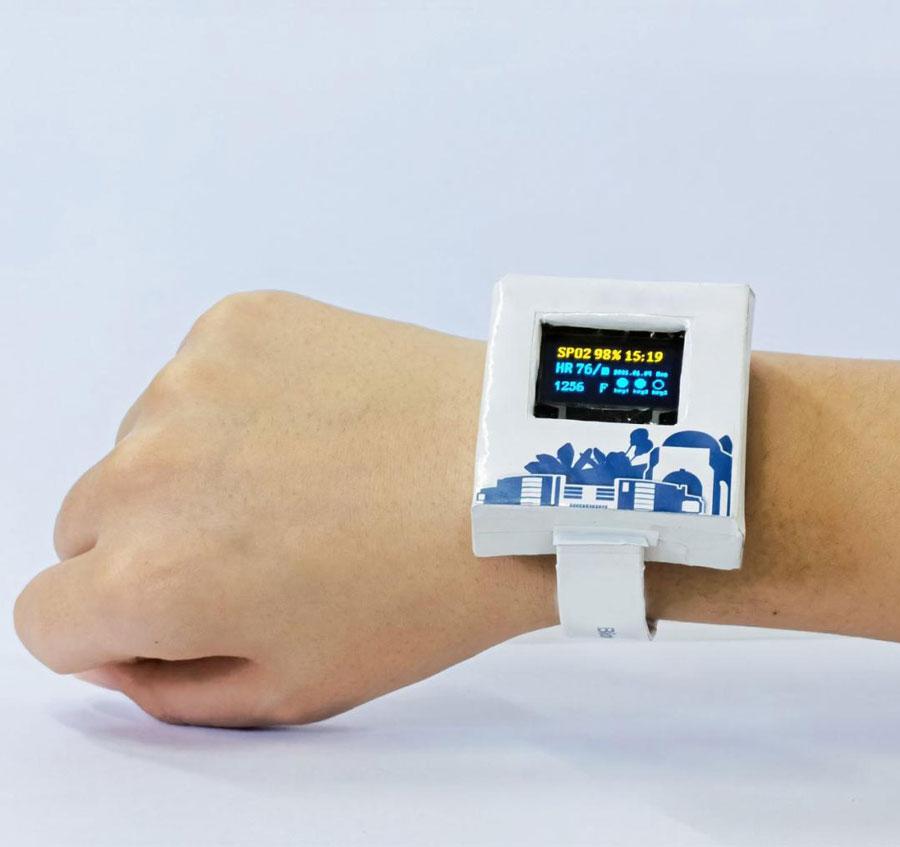Problem dissolving? Small electronics recycled by dissolving in water
A smartwatch that dissolves within 40 hours when submerged in water could aid small electronics recycling, say scientists in China.

The team from Tianjin University claims to have created a two-metal nanocomposite with a degradable polymer.
‘In our study, the joint effect of galvanic corrosion and redeposition has been utilised to develop bimetallic transient nanocomposites, which can be printed and water-sintered to yield high-performance transient PCB [printed circuit board] circuits with excellent electrical conductivity and mechanical robustness,’ says Dr Xian Huang, Professor of Biomedical Engineering at the University.
The researchers began by adding silver nanowires (AgNWs) to the zinc-based nanocomposite to make it highly conductive. This is followed by screen-printing the metallic solution onto pieces of poly(vinyl alcohol) – a polymer that degrades in water – and solidifying the circuits by applying small droplets of water that facilitate chemical reactions and then evaporate.
‘The nanocomposites react with water through a three-phase reaction process,’ Huang notes. ‘The propionic anhydride (PA) first reacts with water to form a weak acid that removes spontaneous surface oxidation on the zinc nanoparticles (ZnNPs) and AgNWs, leading to exposure of the pure metal layers and releasing of Zn₂+/Ag+ to the surrounding humid environment.
‘The second stage involves the galvanic reaction in Zn₂+/Ag+-rich electrolyte between Zn and Ag with different chemical activities, resulting in deposition of Zn particles onto AgNWs. The last stage features two simultaneous processes that include a reaction between acid and Zn and redeposition of Zn on ZnNPs and AgNWs to maintain a dynamic equilibrium of Zn₂+ in the electrolyte solution.
‘Due to water evaporation, a passivation layer was at last formed due to the precipitation of electrolytes on the surface of ZnNPs and Zn-coated AgNWs to protect them from oxygen exposure.’
Thereafter, Huang explains the two-step dissolving process. ‘Firstly, the smartwatch case made of PVA will be dissolved and destroyed. Secondly, the PVA boards and nanocomposites inside the smartwatch will be gradually exposed to water and degraded…The resulting residue only contained electron components, chips, a battery and an OLED screen.’
Huang says that although the AgNWs cannot be dissolved in water, a cytotoxicity study demonstrates that it is a non-biohazard.
‘The maximum undissolvable AgNWs is 1mg/L, which is determined by the requirement of environmental protection and regulation from the Ministry of Ecology and Environment of the People's Republic of China.
‘In the case of implantable devices, undissolvable AgNWs can be absorbed by the body or removed out of the body through metabolism,’ he adds. ‘The maximum amount of AgNWs is around 0.05mg/L, according to the safety guideline issued the World Health Organization. In addition, the cytotoxicity experiment in our study confirmed that 5wt.% of AgNWs are safe for 293T cells.’
Huang predicts that the techniques and materials presented here may inspire more transient devices with high mechanical robustness and electrical performance in the future, generating broader impacts in the areas of healthcare and consumer electronics.







